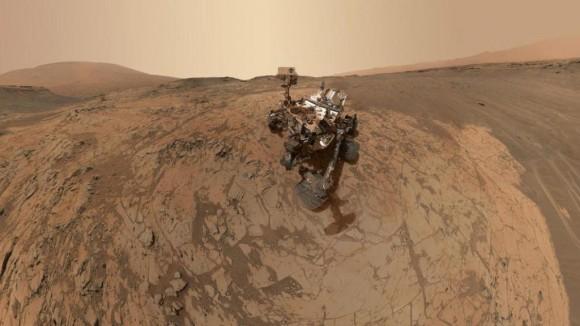A team using the Sample Analysis at Mars (SAM) instrument suite aboard NASA’s Curiosity rover has made the first detection of nitrogen on the surface of Mars from release during heating of Martian sediments.
Nitrogen is one of the building blocks of larger molecules like DNA and RNA which encode genetic instructions, and proteins. The discovery adds to the evidence that ancient Mars once had conditions suitable for microbial life.

The nitrogen was detected in the form of nitric oxide, and could be released from the breakdown of nitrates during heating. Nitrates are a class of molecules that contain nitrogen in a form that can be used by living organisms. Nitrate (NO3), a nitrogen atom bound to three oxygen atoms, is a source of fixed nitrogen that can join with various other atoms and molecules.
Curiosity, whose mission is to discover if Mars ever had conditions suitable for microbial life, has already found evidence of organic matter and dry riverbeds and minerals that only form in the presence of liquid water.
The evidence for nitrates was found in scooped samples of windblown sand and dust at a site dubbed Rocknest, and in samples drilled from mudstone at two sites in the Yellowknife Bay area, formed from sediment deposited at the bottom of an ancient lake.
The Rocknest sample is a combination of dust blown in from distant regions on Mars and more locally sourced materials, suggesting that nitrates are likely to be widespread across Mars.
